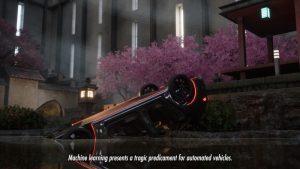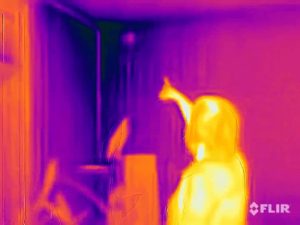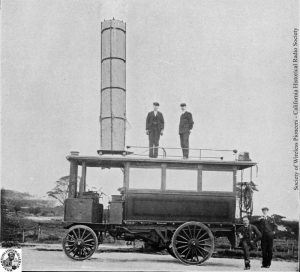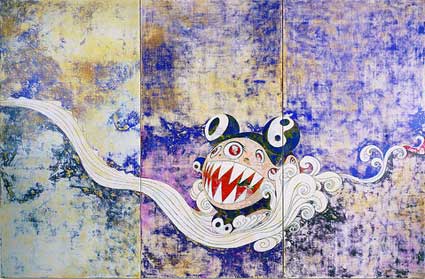 727, 1996. Courtesy of Tomio Koyama Gallery, Tokyo and Blum & Poe, Los Angeles. ©1996 Takashi Murakami/Kaikai Kiki Co., Ltd. All Rights Reserved
727, 1996. Courtesy of Tomio Koyama Gallery, Tokyo and Blum & Poe, Los Angeles. ©1996 Takashi Murakami/Kaikai Kiki Co., Ltd. All Rights Reserved
Is there anyone left in this room who doesn’t know how much i like Takashi Murakami (and his Kiki character)? Is there anyone who doesn’t like his work? Or doesn’t like to loathe its shallowness?
Now that i’m back in Europe (Yeah!), the usual programme will resume and start with Takashi Murakami retrospective at the Brooklyn Museum. I’m not going to bore everyone with a review of the show, just a few facts i discovered and images you’ve probably already seen everywhere.
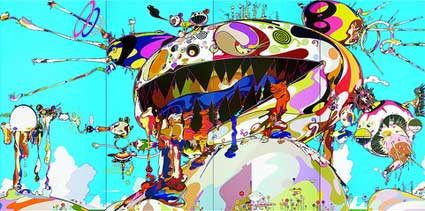 Tan Tan Bo Puking – a.k.a. Gero Tan, 2002. Collection of Amalia Dayan and Adam Lindemann. Courtesy of Galerie Emmanuel Perrotin, Paris and Miami. ©2002 Takashi Murakami/Kaikai Kiki Co., Ltd. All Rights Reserved.
Tan Tan Bo Puking – a.k.a. Gero Tan, 2002. Collection of Amalia Dayan and Adam Lindemann. Courtesy of Galerie Emmanuel Perrotin, Paris and Miami. ©2002 Takashi Murakami/Kaikai Kiki Co., Ltd. All Rights Reserved.
– Murakami’s company/factory/collective is called Kaikai Kiki which means elegant or strange or bizarre phenomena. The term was used in the 16th century by critics to describe the work of painter Kanō Eitoku as brave, powerful and yet keenly sensitive.
– Kaikai and Kiki are the pink and white stars of a new animation. They travel the world in a living spacecraft, watch as nasty monsters are turned into poop by a mighty princess and learn how to grow watermelons. Trailer:
– One of the reasons why Murakami is dubbed “the Japanese Warhol” is because he plays with the idea of blurring the commercial with the artistic. Not that he needs money to pay his rent, his Lonesome Cowboy sculpture recently sold at an auction for $15.1 million, nearly four times its $4 million high estimate. Aaanyway, Murakami did what even Warhol hasn’t done: he installed a fully functioning Louis Vuitton shop right inside the museum.
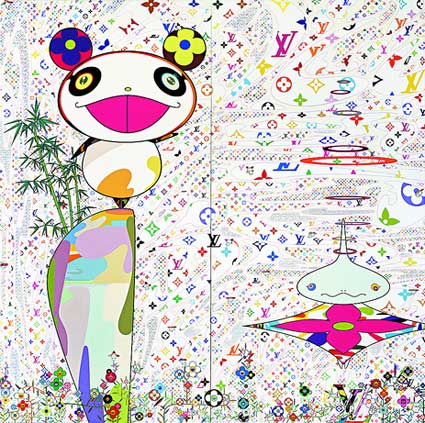 The World of Sphere, 2003. Courtesy of Marianne Boesky Gallery, New York. ©2003 Takashi Murakami/Kaikai Kiki Co., Ltd. All Rights Reserved
The World of Sphere, 2003. Courtesy of Marianne Boesky Gallery, New York. ©2003 Takashi Murakami/Kaikai Kiki Co., Ltd. All Rights Reserved
– The artist re-appropriated the LV logo in the painting The World Of Sphere in 2003.
 Super Nova, 1999. Fractional and promised gift of Vicki and Kent A. Logan to the
Super Nova, 1999. Fractional and promised gift of Vicki and Kent A. Logan to the
collection of the San Francisco Museum of Modern Art. Courtesy of Marianne Boesky Gallery, New York. ©1999 Takashi Murakami/Kaikai Kiki Co., Ltd. All Rights Reserved
– The 18th century handscroll Compendium of Vegetables and Insects by Itō Jakuchū (detail) inspired the 7 panels of Murakami’s catalog of mushrooms. But the mushroom that most troubles Murakami is the atomic one.
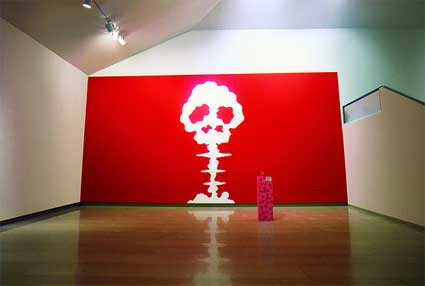 Time Bokan, 1993. Courtesy of the artist. ©1993 Takashi Murakami/Kaikai Kiki Co., Ltd. All Rights Reserved
Time Bokan, 1993. Courtesy of the artist. ©1993 Takashi Murakami/Kaikai Kiki Co., Ltd. All Rights Reserved
– For a guy who siphoned classical painters, Disney characters, mangas and everything in between he is effing obsessed with copy rights.
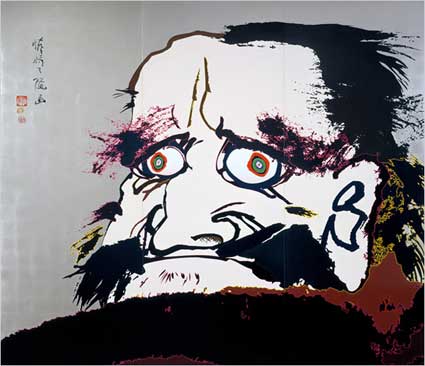 That I may time transcend, that a universe my heart may unfold (2007). Takashi Murakami/Kaikai Kiki Company, courtesy Gagosian Gallery
That I may time transcend, that a universe my heart may unfold (2007). Takashi Murakami/Kaikai Kiki Company, courtesy Gagosian Gallery
– Murakami has started making portraits. The museum is showing two paintings of r Bodhidharma, the sixth-century monk credited to have introduced Zen Buddhism to China.
There are numerous videos about Murakami on you tube, my favourite so far is this extract of one episode of Ben Lewis’ art safari tv series:
Followed closely by Jonathan Ross’ interview of the artist on Japanorama.
The New York Times has more images.
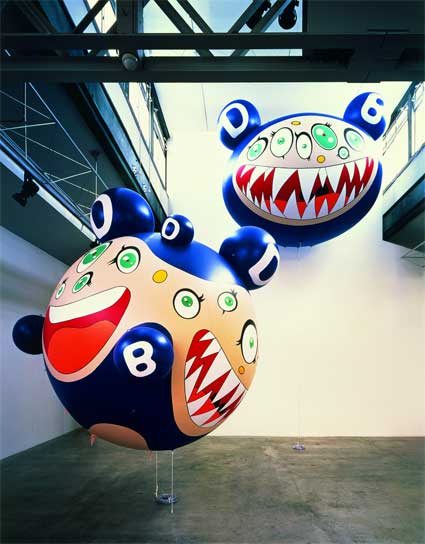 Installation view of Crazy Z, DOB’S MARCH (1995) and Forest of DOB (1995) at SCAI The Bathhouse, Tokyo. Photo by Norihiro Ueno. Courtesy of SCAI the Bathhouse,Tokyo; Galerie Emmanuel Perrotin and Tomio Koyama Gallery. ©1995 Takashi Murakami/Kaikai Kiki Co., Ltd. All Rights Reserved
Installation view of Crazy Z, DOB’S MARCH (1995) and Forest of DOB (1995) at SCAI The Bathhouse, Tokyo. Photo by Norihiro Ueno. Courtesy of SCAI the Bathhouse,Tokyo; Galerie Emmanuel Perrotin and Tomio Koyama Gallery. ©1995 Takashi Murakami/Kaikai Kiki Co., Ltd. All Rights Reserved
The Takashi Murakami retrospective runs until July 13 at the Brooklyn Museum in New York.


